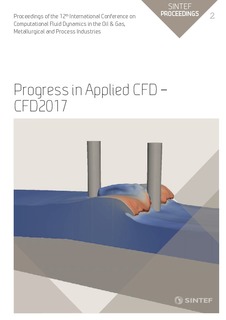Validation of a rapid slag viscosity measurement by CFD
Chapter, Conference object, Peer reviewed
Published version
Permanent lenke
http://hdl.handle.net/11250/2480078Utgivelsesdato
2017Metadata
Vis full innførselSamlinger
- SINTEF Proceedings [402]
Sammendrag
Slag viscosity is an important property in daily process practice, as well as for modelling flows in metallurgical processes accurately. Measuring slag viscosities is a challenging task, and usually requires a specific hightemperature furnace set-up, which needs to be gas tight and still allow for e.g. torque measurements on a wellaligned rotating viscometer spindle. The inclined plane technique is an alternative, requiring little time and no complex instruments. A slag sample, heated in a crucible or from an industrial furnace, is poured onto an inclined steel plate, and runs down while solidifying, to form a ribbon of a certain length. The ribbon length has been experimentally proven to be correlated rather accurately to the high temperature viscosity. However, as the viscosity increases sharply during cooling, the ribbon length should also depend on the temperature dependence of the viscosity. To study these effects, a CFD model has been built in this project. This model also allows to understand the effect of slag weight, steel plate thickness, temperature, and inclination, which could influence the results. The model is based on a VOF description for the slag surface and uses accurate heat capacity and viscosity functions based on thermodynamic calculations. This approach allows to increase the reliability of the fast slag viscosity measurement.
